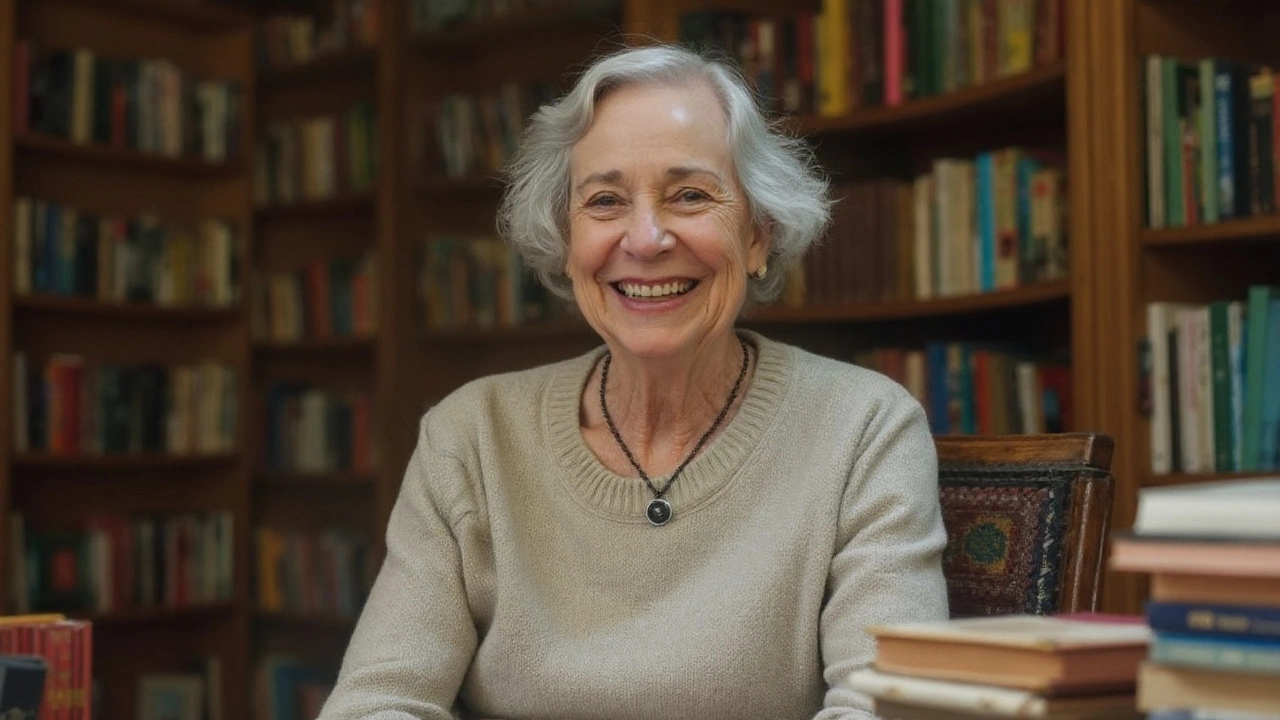Jacqueline Wilson books ranked: ‘The Lottie Project’ tops fan-made list as ‘Girls in Tears’ stumbles
A reader-built ranking shakes up a beloved canon
Few British authors have shaped modern children’s reading like Jacqueline Wilson. With more than 40 million books sold in the UK and storylines that cut straight to real-life issues—divorce, foster care, friendship politics, mental health—her backlist is a rite of passage. Now a devoted fan has ranked every title they’ve read, offering a clear-eyed look at what still lands and what feels out of step. It’s an unfiltered snapshot of how a new generation is rereading the classics—and reshuffling the deck of Jacqueline Wilson books.
The reader’s method is simple and personal: weigh thematic focus, memorability, character development, and sheer emotional impact. The list also doesn’t dodge discomfort. When an older plot feels off by today’s standards, the reviewer says so, and even notes Wilson herself has since reflected that certain storylines wouldn’t be written the same way now. That framing turns a personal ranking into a conversation about how children’s literature evolves.
At the very top, The Lottie Project (1997) takes the crown. It’s easy to see why. The book follows Charlie (short for Charlotte), a sharp, funny girl working on a school history project who imagines the life of a Victorian servant named Lottie. The Victorian diary becomes a mirror for Charlie’s own world—money worries, single-parent stress, and a kid trying to hold it together when the adults can’t fix everything. The pick underscores what this reader values most: a tight theme, a standout voice, and a story that respects young readers’ intelligence.
Second place goes to The Cat Mummy (2001), a compact heartbreaker about grief. Verity’s love for her elderly cat Mabel, and the way she processes loss, gives the book a raw, honest tone. The reviewer highlights its restraint—big feelings handled with a light touch—arguing that smaller stories can leave the biggest mark when they’re this emotionally precise.
Rounding out the top three is Sleepovers, a school-ground social drama that Wilson fans know almost by heart. The book centers on Daisy and her tight-knit “Alphabet Girls” friendship group—names running from A to E—and their tradition of rotating birthday sleepovers. Trouble arrives in the form of Chloe, a queen bee antagonist who pushes boundaries to cruel effect; one detail the reader remembers vividly is a prank involving a horror tape slipped into a 101 Dalmatians case. The tension peaks when Daisy worries that Chloe will target her disabled sister, Lily. For the reviewer, Sleepovers nails how small acts of meanness can feel seismic at that age—and how protection, kindness, and backbone shape who kids become.
The list doesn’t shy away from downgrading fan favorites when the pieces don’t quite fit. Girls in Tears (2002) lands at No. 22, the lowest-ranked entry in Wilson’s teen-leaning Girls series. The first three—Girls in Love, Girls Under Pressure, Girls Out Late—had a clear emotional arc and a strong sense of friendship dynamics. This later installment, the reviewer argues, loses that tight focus. The themes feel scattered compared with the earlier trio’s clean through lines, so it slides down the table.
Dustbin Baby (2001) appears at No. 21, and the placement comes with a caveat. The reviewer says they love it deeply—even if it ends up in the lower tier—and recalls constantly finding it on reserve at the library because demand was so high. They also describe plot beats more closely associated with Sleepovers, suggesting a mix-up in memory. For the record, Dustbin Baby follows April, abandoned in a dustbin as a newborn, as she retraces the people and places of her past on her 14th birthday. It’s one of Wilson’s most hard-hitting stories about care homes, foster placements, and the search for identity; it was later adapted for television, further cementing its cultural footprint.
- No. 1: The Lottie Project (1997) — a dual-timeline masterclass in empathy and everyday resilience.
- No. 2: The Cat Mummy (2001) — grief for young readers, handled with careful honesty.
- No. 3: Sleepovers — friendship politics, disability, and the cost of cruelty.
- No. 21: Dustbin Baby (2001) — beloved by the reviewer despite its lower slot; a tough, searching journey.
- No. 22: Girls in Tears (2002) — the series’ most uneven entry, criticized for a looser theme.

Lines that moved, plots that jarred, and a legacy under review
One of the most debated entries in the ranking involves the book centered on Prue—a character who transitions from homeschooling to a mainstream school and gets drawn into a troubling relationship with her art teacher, Rax. The storyline includes a sequence in which Prue skips tutorial to buy expensive underwear, only to face ridicule in the changing room, and it ends with her leaving school to shield the teacher’s career. Readers will recognize the title: Love Lessons (2005). The reviewer points out that Wilson has since said she wouldn’t write that storyline today, a nod to changing standards around safeguarding and power dynamics in fiction for young people.
That note matters. This ranking isn’t trying to cancel the past; it’s arguing for context. Children’s books are time capsules, and what once read as provocative or edgy can feel uncomfortable after years of cultural change. The list treats these moments as teaching tools—places where librarians, teachers, and parents can talk with readers about boundaries, consent, and why certain relationships are inappropriate, even when framed as “romantic” on the page.
The reviewer’s personal history with the books is part of the story too. They describe queuing on library waiting lists—especially for titles like Sleepovers—because copies were always out. That tracks with Wilson’s long-standing popularity in UK libraries. Her novels are short, propulsive, and conversation-starting. Kids pass them along. Siblings inherit them. Teachers use them to break the ice on tough topics.
Across the ranking, patterns emerge. Books with a single, clearly defined emotional core rise. Stories that juggle too many themes, or revisit familiar beats without fresh momentum, fall back. Character voice counts for a lot. When a narrator like Charlie (The Lottie Project) or Verity (The Cat Mummy) pops off the page with humor and vulnerability, the book climbs.
Zoom out and the list reads like a map of Wilson’s influence. She brought working-class families into the center of the story. She wrote about care homes, social workers, and the churn of placement. She tackled bullying, fat-shaming, self-image, and grief without sugarcoating. The result wasn’t just sales; it was representation. Kids who didn’t often see their lives in books suddenly did, and that changes the kinds of readers they become.
Of course, times change and so does the bookshelf. The ranking ends with a telling line: this was the final Wilson novel the reader finished before picking up “Think Again,” the next book on their nightstand. It feels like a curtain call on an era of reading—one fan closing a loop after growing up with these stories. That’s probably the best measure of lasting impact: not where a title lands on a list, but whether the characters still live in your head years later, still arguing, still comforting, still asking the right questions.
For anyone revisiting Wilson now—parents, teachers, or readers who grew up on Tracy Beaker and are debating what holds up—the list offers a practical guide. Start where the themes are tight and the voices are sharp. Prepare to pause where the period has dated the plot. And use the rough edges as starting points for bigger conversations. That’s the real power of a ranking like this: it turns nostalgia into a fresh reading plan.





